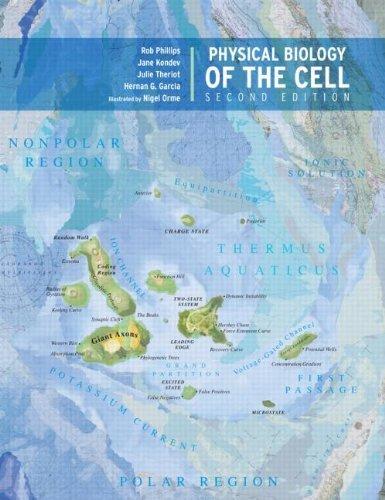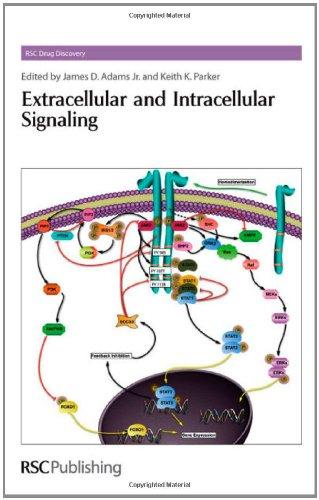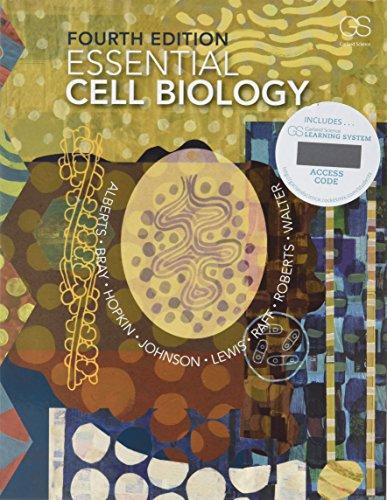Life Sciences , Cell & Molecular Biology
Physical Biology of the Cell
Physical Biology of the Cell is a textbook for a first course in physical biology or biophysics for undergraduate or graduate students. It maps the huge and complex landscape of cell and molecular biology from the distinct perspective of physical biology. As a key organizing principle, the proximity of topics is based on the physical concepts that unite a given set of biological phenomena. Herein lies the central premise: that the appropriate application of a few fundamental physical models can serve as the foundation of whole bodies of quantitative biological intuition, useful across a wide range of biological problems. The Second Edition features full-color illustrations throughout, two new chapters, a significantly expanded set of end-of-chapter problems, and is available in a variety of e-book formats. Editorial Reviews From the PublisherThe book is well illustrated, problems and references complete each chapter, figures and other data can be downloaded from the Garland Science Web site. Its public is assumed to be students taking a first course in physical biology or biophysics, and scientists interested in physical modelling in biology. Physical Biology of the Cell has much to offer to both categories..." - Crystallography ReviewsThis textbook is an excellent resource, both for a research scientist and for a teacher. The authors do a superb job of selecting the material for each chapter and explaining the material with equations and narrative in an easily digestible manner."--Yale Journal of Biology and Medicine (YJBM) Praise for the First Edition of Physical Biology of the CellPhysical Biology of the Cell...aims to be both an introduction to molecular and cellular biology for physicists and an introduction to physics for biologists. Though that sounds like a daunting task, the book fully and impressively delivers. Physical Biology of the Cell might well become a similar classic [as Molecular Biology of the Cell] for anyone who heeds its mantraquantitative data demand quantitative models." It will give both physicists and biologists a useful introduction into the other camp's methods and ways of thinking." --Ralf Bundschuh, Physics Today, 2009[The] authors of Physical Biology of the Cell have produced one of the first multi-purpose textbooks that is readily accessible to both physicists and biologists....When read from cover to cover, the book is both very instructive and highly entertaining, with the authors using humor to deliver strong take-home messages in each chapter....Physical Biology of the Cell provides instructors with excellent material to create a graduate level course in biology or physics." --Patricia Bassereau and Pierre Nasoy, Nature Cell Biology, 2009Physical Biology of the Cell is beautifully crafted: self-contained and modular, it provides tutorials on fundamentals and has material to hold the interest of a more sophisticated reader. It is fast-paced, proceeding within each chapter from freshman basics to graduate level sophistication. To truly master the physics presented in the book, one should do the problems provided with each chapter. These problems are well thought out and are a major teaching resource." --Boris Shraiman, Cell, 2009...a monumental undertaking by three outstanding experts in the field...the book is a rich collection of special topics in biophysics..." --Gabor Forgacs, Quarterly Review of Biology, 2009I would thoroughly recommend [Physical Biology of the Cell] to anyone interested in investigating or applying biophysical research methods to their work. It is likely to be a fantastic teaching tool and is a welcome addition in this age of increasingly interdisciplinary science." --David Stephens, The British Society for Cell Biology Newsletter, 2009 Nature Cell Biology . . . [The] authors of Physical Biology of the Cell have produced one of the first multi-purpose textbooks that is readily accessible to both physicists and biologists . . . . When read from cover to cover, the book is both very instructive and highly entertaining with the authors using humour to deliver strong take-home messages in each chapter . . . .Physical Biology of the Cell provides instructors with excellent material to create a graduate level course in biology or physics. The book is also very timely as it presents the most recent views in cell biology. As physicists, we strongly agreed with the message of the authors, but will this be the case for our biologist colleagues? We will know for sure if blackboards in biology departments, like the sand on the book cover, are soon covered in equations! Quarterly Review of Biology . . . a monumental undertaking by three outstanding experts in the field . . . the book is a rich collection of special topics in biophysics . . . Cell Physical Biology of the Cell is beautifully crafted: self-contained and modular, it provided tutorials on fundamentals and has material to hold the interest of a more sophisticated reader. It is fast-paced, proceeding within each chapter from freshman basics to graduate level sophistication. The book requires minimal prerequisites: a curious mind and undergraduate calculus will go a long way. It can be used as an undergraduate or early graduate biophysics course in a physics or engineering department. In the context of a molecular cell biology course, it could complement Molecular Biology of the Cell (or its equivalent), serving as a vehicle to introduce biology students to a quantitative way of thinking about biology. To truly master the physics presented in the book, one should do the problems provided with each chapter. These problems are well thought out and are a major teaching resource. (The instructor can also obtain a set of solutions). Because of these features, Physical Biology of the Cell offers a great deal of flexibility as a teaching tool. Doody's Review Service Reviewer: Bruce A. Fenderson, PhD (Thomas Jefferson University) Description: This book explores the application of mathematics and physics to cell structure and function, addressing fundamental questions in biophysics, providing quantitative models, and describing research applications. Topics are sequenced according to common physical properties. For example, the mathematics of DNA bending is applied to other long, thin biological structures such as filamentous proteins. The book is divided into four major sections on Facts of Life, Life at Rest, Life in Motion, and Meaning of Life, and its 20 chapters cover topics ranging from the mathematics of water to dynamics of molecular motors. The primary focus is on cell biology, biophysics, and physical biochemistry. Purpose: The authors' purpose is to communicate a style of thinking about discovery in science and they hope to illustrate how mathematical principles can be applied to the study of life. How does it work? Let's make a numerical guess. Is our quantitative model valid? How can our model be tested? The authors believe that a synthetic approach to research based on mathematics, physics, and biology will serve toilluminate the world around us." Audience: According to the authors, this bookis appropriate for a first course in physical biology or biophysics for either undergraduates or graduate students." It is also intendedfor any scientist interested in learning the basic principles and applications of physical modeling for research in biology...and provides a novel perspective even to scientists who are already familiar with some of the material." It also may provide a high-voltagecareer accelerator" for those interested in biochemistry and molecular cell biology. The book does not assume extensive prior knowledge on the part of readers, and students should not be intimidated by the complexity of the subject. The authors are outstanding educators. Features: The authors convey a sense of excitement about the field of quantitative biology. Nearly every page is filled with fun facts that stimulate the imagination. How thick is the plasma membrane? What is the radius of an average protein? Every chapter begins with a visionary quotation. Chapters include an overview, conclusion, problem set, and references for further reading. The end-of-chapter problems encourage students to apply quantitative model-building skills to experimental data from the primary research literature. Boxes highlight key concepts such asexperiments behind the facts" andmath behind the models." Section headers are often declarative statements such as,The cytoskeleton can be viewed as a collection of elastic beams." The continuous tone figures and line drawings are descriptive and captivating. The book comes with an extensive list of ancillaries including a solutions manual for end-of-chapter problems and a complete set of teaching slides and videos. Assessment: This comprehensive biophysics textbook is a joy to read. The authors use principles of Socratic teaching to help make learning fun. They ask basic questions and emphasize first-order approximations that lead to quantitative models. Everywhere readers turn, there is mathematics and the power of this approach is compelling. The authors succeed in illustrating the scientific approach to problem solving. Good questions are often more instructive than lists of simple facts. The end-of-chapter problem sets provide an excellent opportunity for students to demonstrate application of their knowledge. This book should serve as a template for the design of other science textbooks. It is an outstanding, scholarly resource that will capture the attention of a wide range of students and faculty in the biomedical and life sciences.
- Phillips, Rob
- Taylor & Francis
- 2012
- 1057
- Paperback
- 9780815344506
Поткатегории










